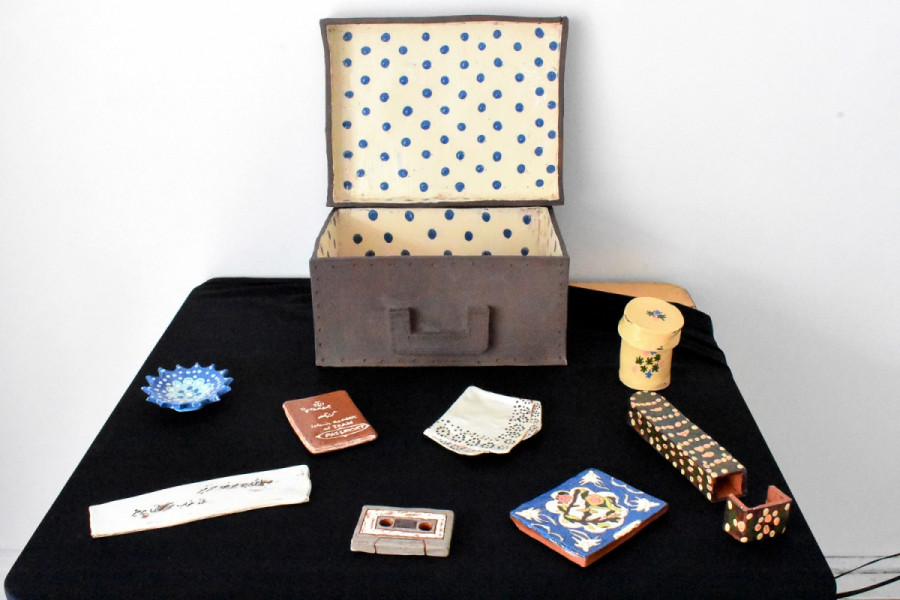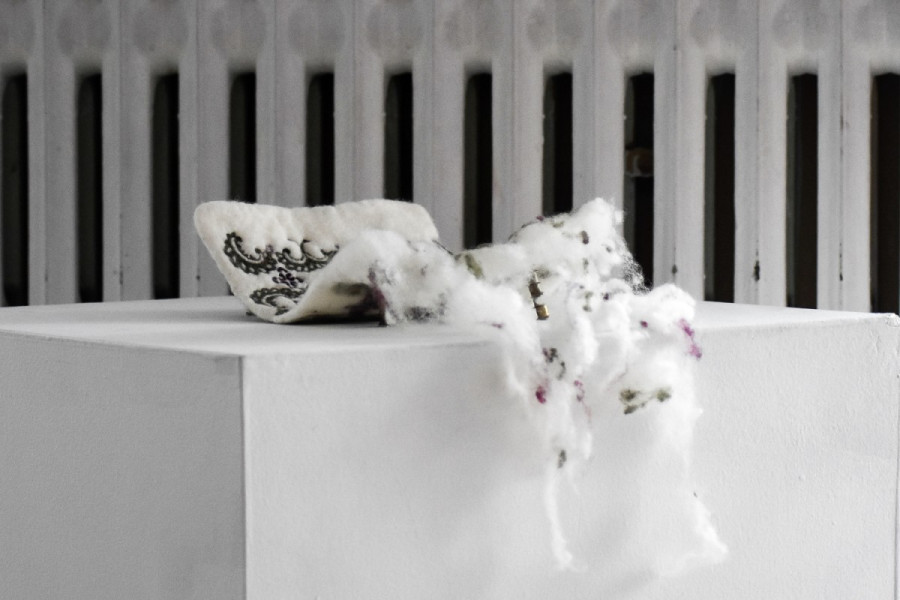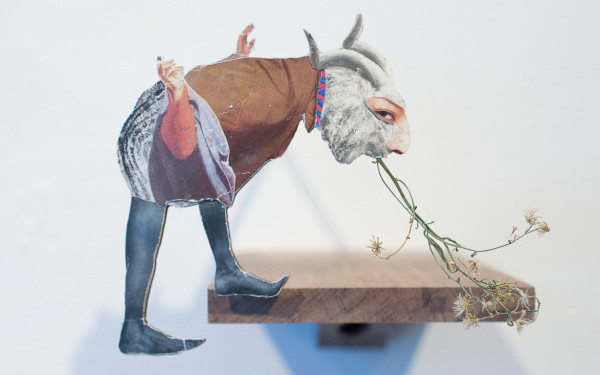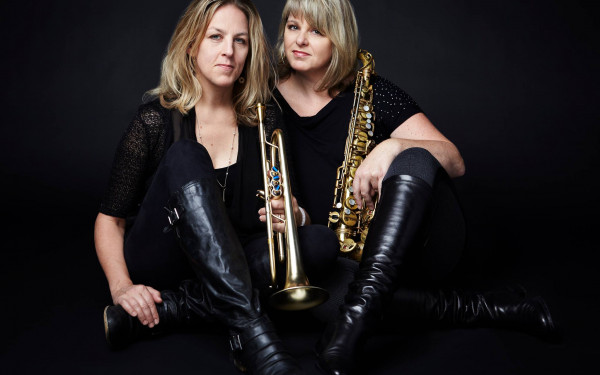Festival Review: Myth Dealing Shows Memories Made Physical
Artists Present Different Ways of Interpreting Personal Myth for Art Matters Festival
It was the title that did it: Myth Dealing. Those three syllables hooked me.
After I took on the assignment, I spent days slowly immersing myself back into the myths that I knew. I was so excited that I arrived half an hour early for the Myth Dealing vernissage last week at Espace Pop.
I stepped inside the gallery and was immediately surrounded by the artwork. The room was small, which required the seven art pieces to be displayed close to one another, creating a visual unity and a story bigger than the individual artworks.
First-time curator Maggie Mills initially imagined Myth Dealing with an open mind. She wanted the exhibition to explore the multiple facets of craft media and its resonance with different mythologies, all while challenging the traditional aesthetic hierarchy.
“I was really interested in how craft has been historically linked to story telling, narrative and mythology,” said Mills. “And the ways that objects, and particularly handmade objects, carry these histories and stories that are, kind of, embedded in them.”
She explained that her interest in feminist art history led her to craft, adding that a lot of media that’s traditionally associated with craft is also feminised and it tends to rank lower on the aesthetic hierarchy of traditional ways that people think about art.
Delicate sounds from artist Saba Heravi’s featured work, Still Life of Memories, drew me to her artwork: a ceramic piece accompanied by a video projected on the wall behind it. The video itself was a loop of the artist putting things into a suitcase, closing it, opening it again, and unpacking everything.
“I had decided to make a piece where I could talk about memory, home, and identity,” explained Heravi. “I immigrated here five years ago, and when I was about to emigrate I had to pack my stuff into two suitcases.”
The artist shared that she wanted to show the process of packing and selecting things for their sentimental weight and value through her piece.
“Objects turn into something else other than objects,” said Heravi. “They become the reminders of a memory, a person, and they have a life inside them that is beyond their objectivity.”
She chose ceramic for its fragility; the material itself aligns with her message.
“It represents the memories that you have with people in the past, they’re very fragile, you can forget them, you collect these objects to have this collection and archives of your memories,” she said.
I was captivated by the video’s audio. The clinking of the objects being delicately moved in and around the suitcase, which Heravi described as a “crackling sound.”

At 7 p.m., the crowd arrived and the ambiance of the space quickly became festive. The art sparked conversations, and the room steadily grew noisier and warmer. Telltale signs of a successful event.
I stopped to take in Hands, a series of embroideries about “the process of making” by Zeke Best Rothfels. The embroidered hands are graceful, moving, still, and at times positioned at awkward angles. The composition of the 12 wooden hoops infuses life into the work, aligning the viewer with the artist’s perspective.
“They’re all my own hands, and they’re all drawn from life. They’re all my left hand, because my other hand was actually doing the work,” explained Rothfels about her piece. “It’s about the work that you see, and the work that you don’t see.”
Rothfels explained that the restrictive nature of embroidery, the delicate working with thread and fabric, opened conceptual possibilities.
“Especially with craft, we try to make this finished, clean product,” Rothfels said. “I think because it’s so often not seen as a legitimate art form that we feel like it has to be the most pristine version of itself. You can’t really have any rough edges. I’m showing this hand that’s at rest. What you can’t see is all the work that the other hand is doing in order to depict that resting hand.”
Beer and whiskey were passed around and the atmosphere became more festive. Amidst all this energy, Claudia Persechino’s piece de(restoration) stood stoically.
Rooted in memory, personal experience and family bonds, the moving piece struck a chord with me. From a bag of unspun wool, Persechino worked the material until it became felt, from which she created this work. The tenderness emanating from the piece is almost painful.
She explained that she wanted to do something with her grandmother’s house so she chose her bedsheet as the starting point for her project and just reproduced the bedsheet with the same patterns.
“I wanted to represent this passage of time. I connected this bed to all of the stories and the times I passed in my grandmother’s house, and in her room,” explained Persechino. “It’s this very intimate and warm object that is getting older and older. And, also the memories connected with it become more and more far away in my mind.”
“The connections between myth, and especially personal myth, and nostalgia and storytelling, and hand-crafted or carefully-rendered objects and images is a very interesting point that I was trying to get across, and I think that it’s something you could get in different ways out of each piece in the show,” Mills said.
Myth Dealing // Art Matters Festival // March 6 – 18 // Espace POP (5587 Parc Ave.)



_600_832_s.png)



